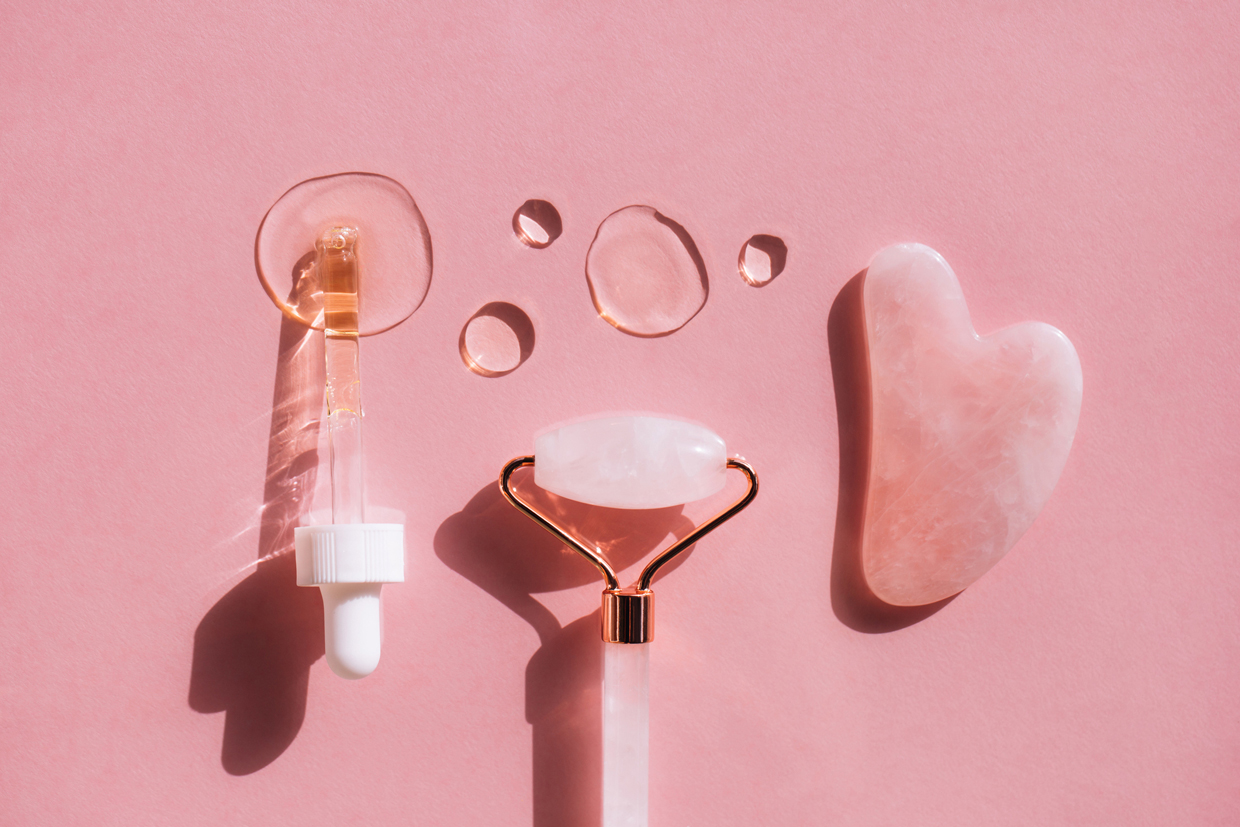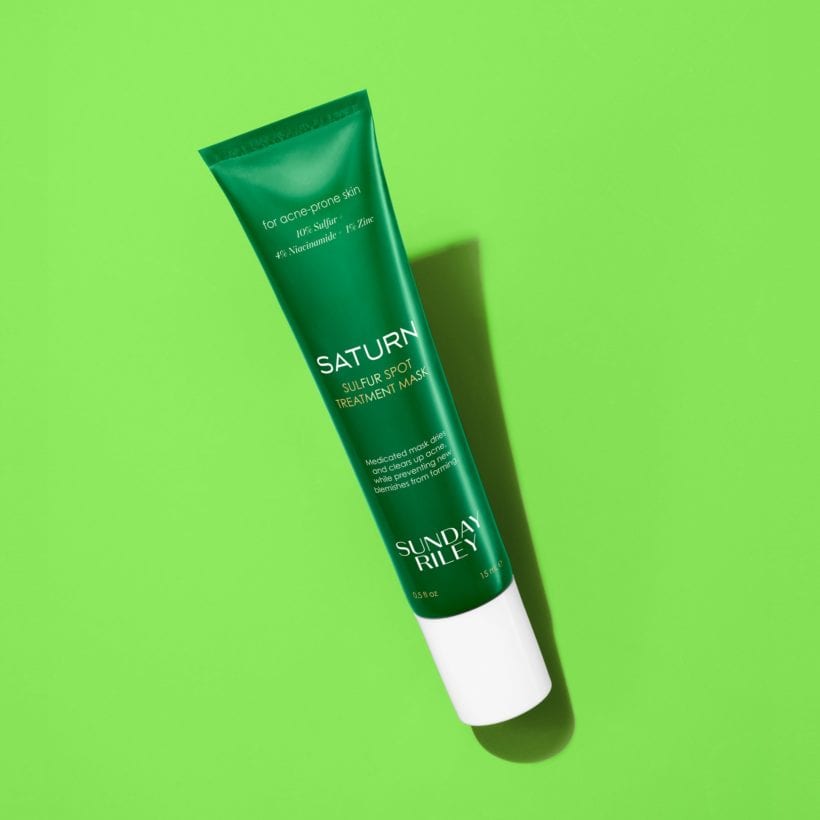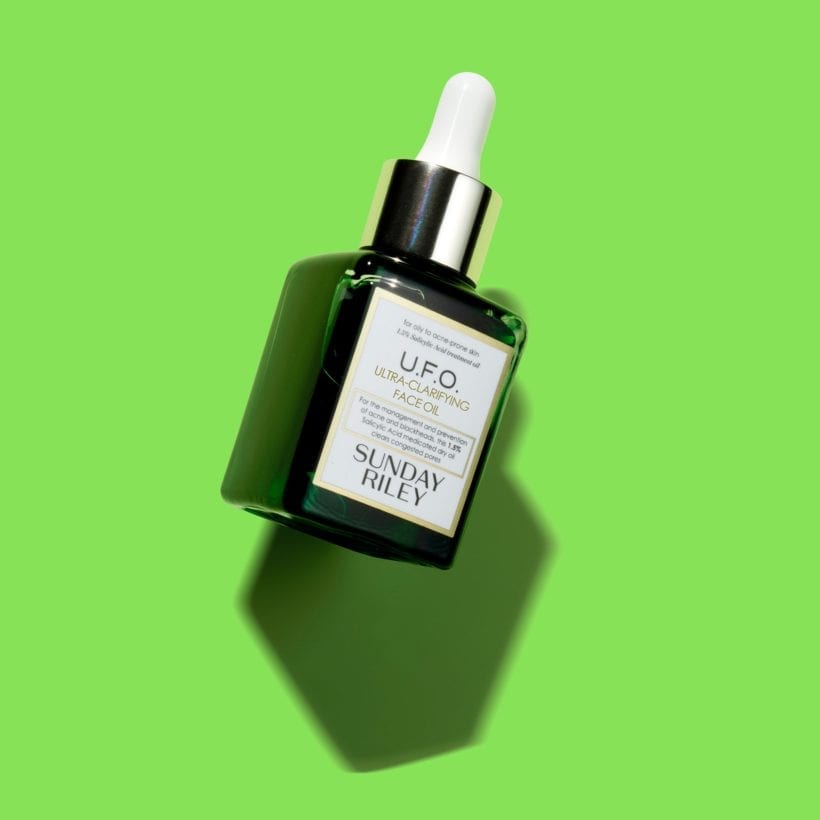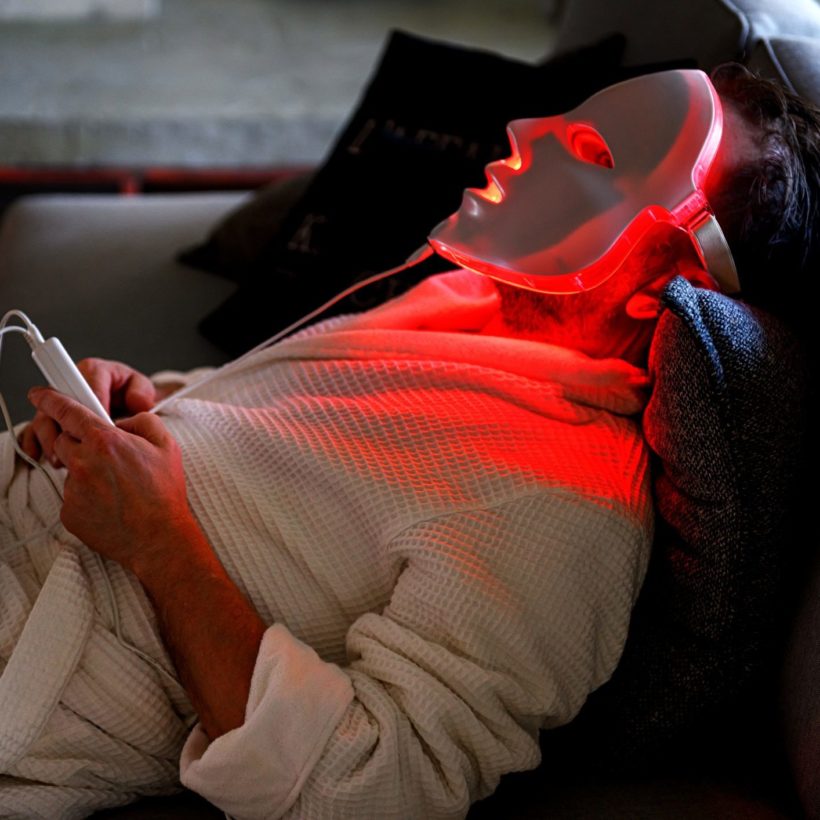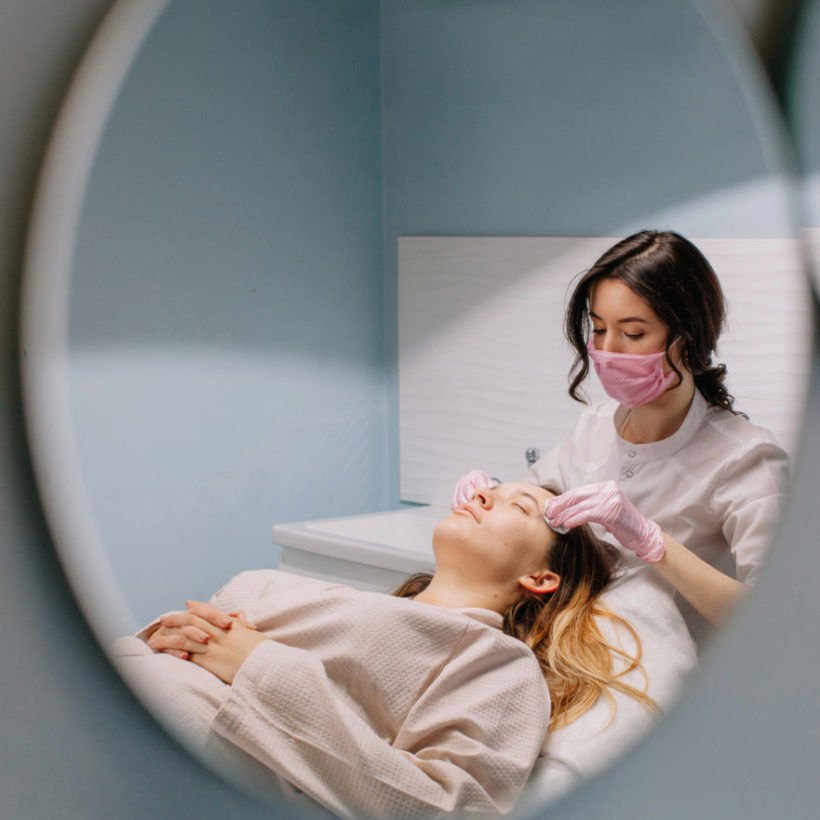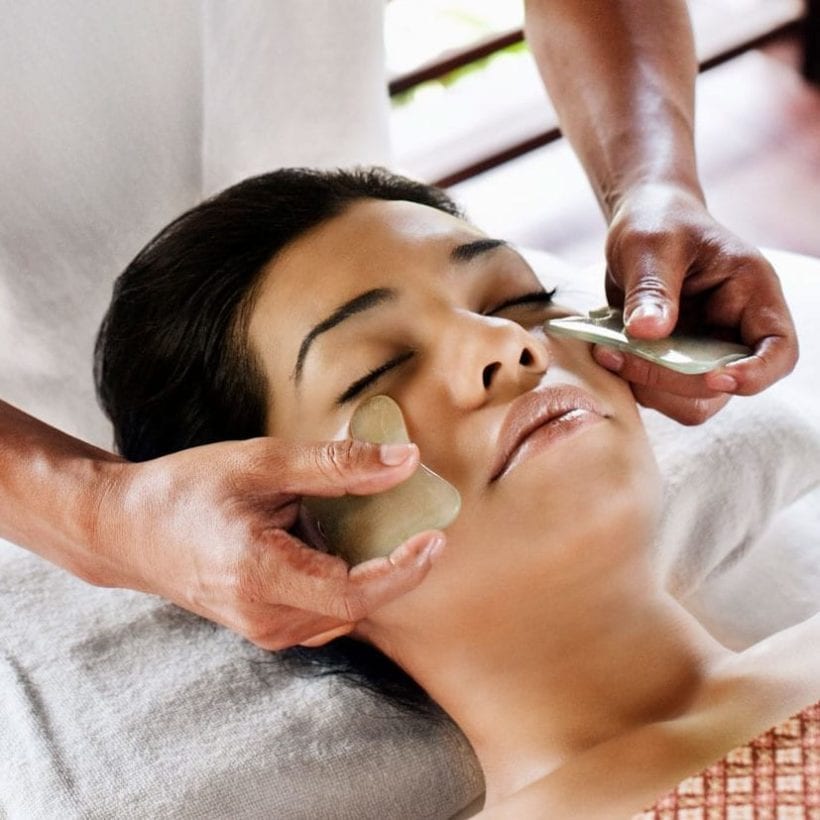Those pretty pink rose quartz rollers and gua sha facial tools always draw us in when they pop up on our social feeds. Not only do they look aesthetically pleasing, but rose quartz purportedly helps decrease blemishes by lessening inflammation in the skin, which contributes to pimples and acne. However, experts warn, we should be wary about the hype particularly around preventing acne, and refrain from viewing rose quartz as a skincare cure-all. “Many rose quartz roller brands over-promise and make claims about the healing properties of natural stones due to their mineral content, but these minerals do not transfer to the skin through contact,” says Sarah Cheung, founder of SACHEU Beauty.
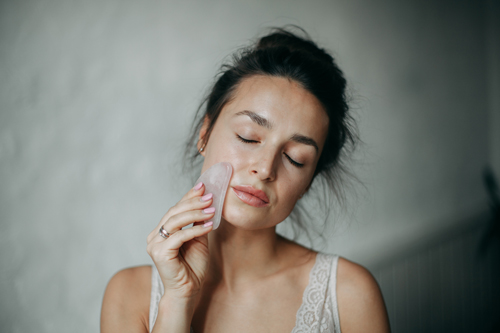
There’s also the potential for natural quartz and stone-based tools to instigate breakouts. Any natural stone, including rose quartz, jade, and amethyst used in rollers and other tools, can be porous and hold onto bacteria that cause breakouts. But, as skincare expert and medical aesthetician Cassandra Bankson explains, rose quartz is a crystalline mineral composed of the same materials as sand and glass. “Although rose quartz can be cooled in a fridge (and transfer that coolness to the skin thanks to the laws of thermodynamics), there is nothing in or about this stone tool that directly kills acne bacteria, which is key to acne production,” she says. “Inflammation is the body’s response to damage, among other things, and has multiple steps. So, just the way someone might put a bag of frozen peas on a swollen ankle, cooled tools may help decrease minor inflammation.”
Are You Rolling Your Way Towards Breakouts?
Rose quartz, in particular, is one of the more popular natural stones used in facial rollers and gua sha tools. Although there are claims surrounding these tools to improve congestion, circulation, and lymphatic drainage, specific evidence that shows data on acne is lacking, says Dr. Ranella Hirsch, a board-certified dermatologist in Boston.
Cheung explains that most natural stones are porous to some degree (unless they are coated with polymers, defeating the purpose of using a natural stone). “Porosity allows bacteria to accumulate if the tool is not properly cleaned and can also transfer spot treatment skincare products to other areas of the skin,” she says. Bankson calls porous stone rollers “an opportunity for other materials, microbes, moisture, or other molecules to find their way inside and fill void spaces in a material.” Akin to leaving a wet sponge by a sink and neglecting to clean it for too long, Bankson says the sponge can start to grow things. “The same thing goes for specific tools, like quartz or jade, that can hold onto moisture, bacteria, and other microscopic particles of dirt or debris.”

Using a tool on the skin always necessitates thorough cleansing before and after each use. But it’s not just the tool itself that can cause undesirable breakouts. For example, Bankson says that using tools that rub the skin can sometimes irritate it and lead to acne or other forms of irritation. “If rose quartz rollers irritate or rub the skin or push dead skin cells over a pore and clog it, this could, in turn, lead to breakouts,” she adds, especially if someone has cystic acne or skin that is already inflamed.
In the case of roller-induced breakouts (or any breakout), give the skin a rest from rolling and massaging. Next, treat the affected area with a spot treatment or anti-acne product to shorten the lifespan and severity of the pimple. “Some of the best and most well-proven ingredients are salicylic acid, benzoyl peroxide, sulfur, and vitamin A,” Bankston says. Then, slowly, start reincorporating the product with safe sterilization practices or switching to a different tool.
The Best Ways To Keep Your Rollers Clean
The best way to clean and disinfect skincare tools is by wiping them down with either a dry cloth with a bit of rubbing alcohol or a disinfecting wipe before and after use. To take even further precautions, try boiling the tool in hot water to kill any bacteria. Or take Cheung’s advice and prevent the potential for blemishes altogether by replacing rose quartz tools with stainless steel tools.
How to Safely Use Facial Massage Tools
Regardless of the tool you ultimately decide to use, Bankston suggests following these steps the next time you use a skincare tool for rolling or gua sha purposes:
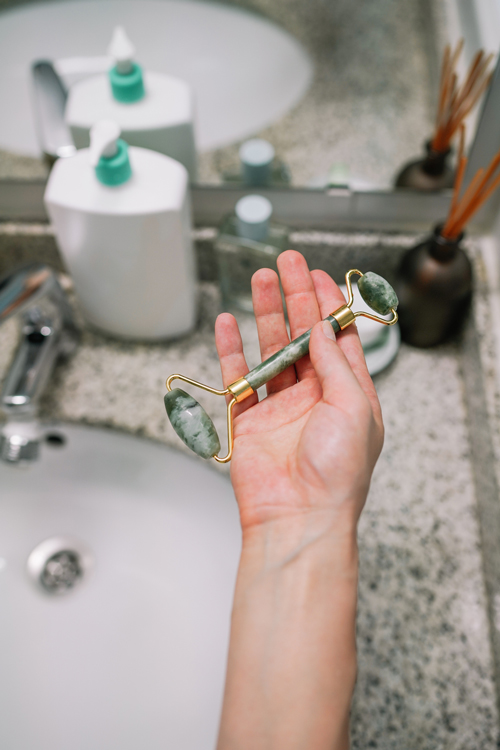
- Wash your hands.
- Go with either bare skin or choose a clean tool and an oil, serum, or other product that can help the tool glide across your skin.
- Gently place the tool on the skin, and using light pressure or just the weight of the tool/device, drag it gently upwards towards your hairline and neck.
- When you are done, remove any excess product, or apply the next step in your routine.
- Clean the tool of any dirt, product, or debris by wiping or washing it. Then, disinfect or sanitize it with an approved cleaner, such as rubbing alcohol or barbicide. Or, put it in a dishwasher or UV sterilizer.
- Store in a clean, dry, safe place.
Is Stainless Steel Better?
How can one know which is best with so many options for beauty devices? Cheung says man-made materials such as silicone, as in the Foreo Luna cleanser, and stainless steel devices, including SACHEU Beauty Facial Roller and the Nuface Microcurrent Toning Device, are better options for facial tools. “These are non-porous materials molded to fit specific skincare needs, and they don’t require mining [for crystals],” she says.
Stainless steel, glass, silicone, and other materials work just as effectively for all the skincare practices that use rose quartz and others, like gua sha and facial rolling. “These alternative materials are even more effective at holding temperature, making them a better option for cold rolling and gua sha,” Cheung says. Dr. Hirsch adds that many of the clinical tools used in practice, like whitehead or blackhead extractors, are made of steel to facilitate sterilization.
Glass is another suitable option for natural quartz and stone products. However, you’ll also be more apt to find glass as the primary material in specific facial tools, including cryotherapy globe rollers and cupping sets. The caveat with glass is that it can easily break and you can unintentionally cause tears in your skin.
We only recommend products we have independently researched, tested, and loved. If you purchase a product found through our links, Sunday Edit may earn an affiliate commission.
